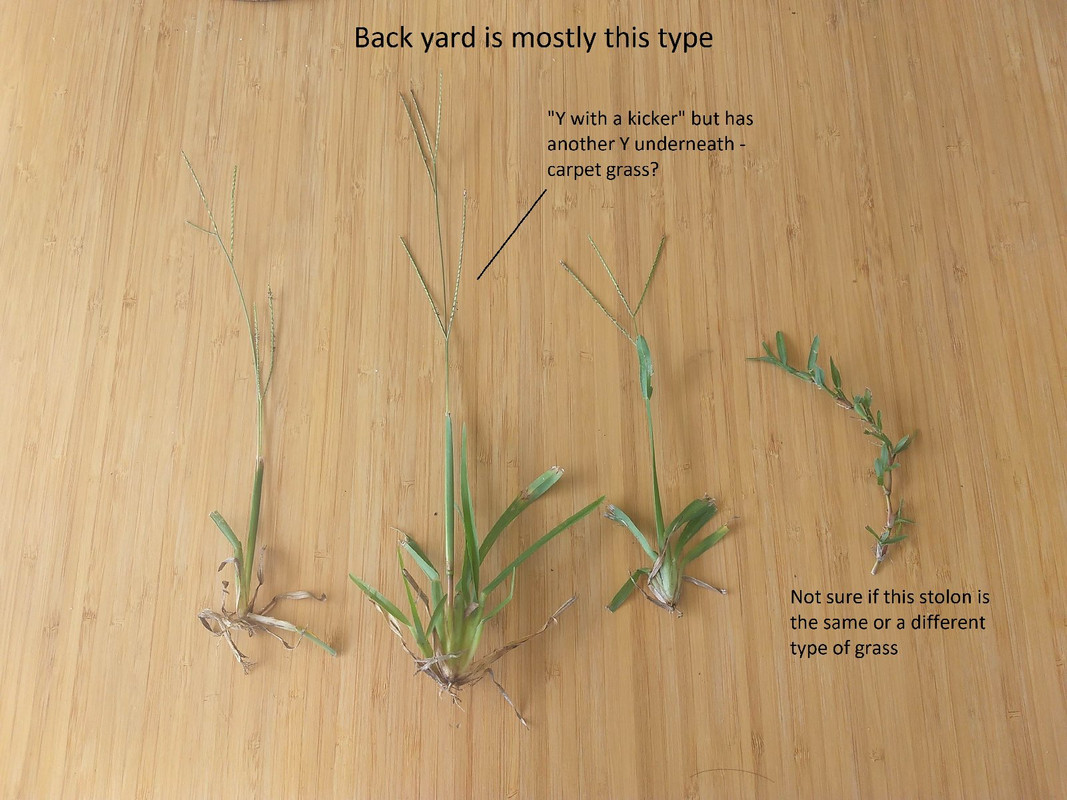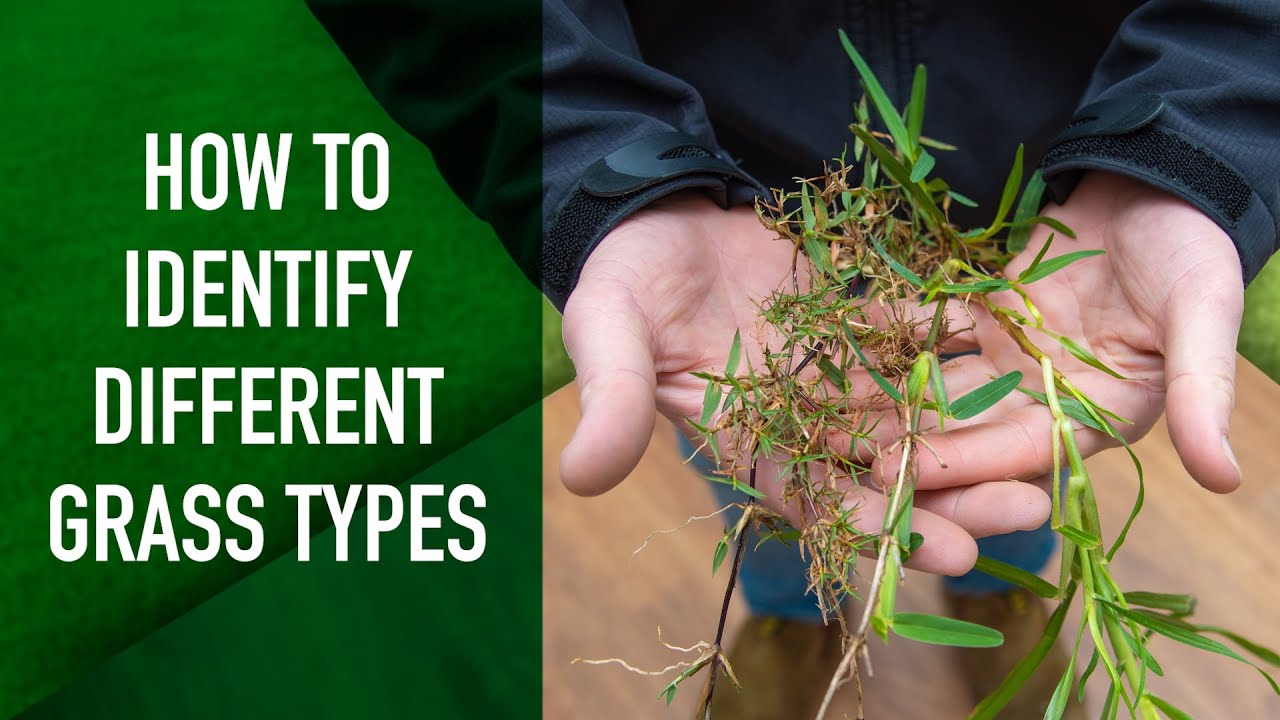Identifying Buffalo Grass is easy by looking for its distinctive blue-green color and its thick, soft texture. Buffalo Grass is a warm-season grass common in the Great Plains region of North America.
It is known for its ability to withstand drought and its low-maintenance requirements. Friendly to both people and pets, Buffalo Grass is an excellent choice for residential lawns and commercial landscapes. This grass variety has a unique growth pattern, with blades that grow in a dense, carpet-like fashion.
Whether you are a homeowner or a professional landscaper, being able to identify Buffalo Grass will help you create a beautiful and resilient lawn. We will explore the key characteristics of Buffalo Grass and provide tips on how to identify it in your own lawn or garden.

Credit: www.thelawnforum.com
Understanding The Unique Traits Of Buffalo Grass
Buffalo grass is a popular choice for lawns due to its various unique traits. One of its standout features is its shade tolerance. Unlike other types of grass, buffalo grass thrives in areas with limited sunlight, making it an excellent option for yards surrounded by tall trees or buildings.
Another advantage of buffalo grass is its drought resistance. This grass variety has the ability to withstand dry conditions and requires less watering compared to other grass types. Its low water requirements make it an eco-friendly option, particularly in regions with limited water resources.
When it comes to maintenance, buffalo grass has a slow growth rate, which means less frequent mowing and reduced overall maintenance. Additionally, its fine-textured blades make for a soft and appealing lawn.
Furthermore, buffalo grass possesses deep roots for stability, which allows it to stay firmly rooted and withstand heavy foot traffic. These deep roots also make the grass more resistant to weeds and pests, reducing the need for chemical treatments.
Buffalo Grass Vs Other Common Turf Grasses
Buffalo grass, a warm-season turf grass, possesses unique characteristics that set it apart from other common turf grasses. When comparing buffalo grass to other warm-season grasses, such as Bermuda grass and Zoysia grass, one can notice several distinguishing features. Buffalo grass requires less water, fertilizer, and mowing than its counterparts. Its ability to withstand drought and its low maintenance requirements make it an attractive option for homeowners.
Conversely, cool-season grasses like Fescue and Kentucky Bluegrass thrive in cooler climates and have different appearance and growth patterns. In terms of visual appearance, buffalo grass features a fine texture and spreads through stolons, while Bermuda grass and Zoysia grass have a coarser texture and spread via rhizomes. Additionally, buffalo grass has excellent environmental adaptation variations, making it suitable for a wide range of climates and soils. Overall, understanding the key differences in appearance and environmental adaptation variations can help in identifying buffalo grass correctly.
Observing Buffalo Grass’s Leaf Structure And Color
To identify Buffalo Grass, it is important to observe its leaf structure and color. The unique V-shaped leaf blades are a key characteristic of Buffalo Grass. These blades have a green to bluish-green coloration, which can help in distinguishing it from other types of grass. Another noticeable feature is the silky or hairy texture of the grass, making it feel different when touched. Evaluating the leaf blade width and length ratios can also provide clues for identifying Buffalo Grass. By examining these specific characteristics, you can successfully identify Buffalo Grass in your lawn or garden.
How to Identify Buffalo Grass: Step by Step Guide
Examining Buffalo Grass’s Seed Head And Flowering Behavior
Inflorescence appearance and structure:
Buffalo grass (Bouteloua dactyloides) is a warm-season grass that produces seed heads and flowers during its reproductive phase. The inflorescence, also known as the seed head, is the structure where flowers are organized and dispersed. It is important to understand the appearance and structure of buffalo grass inflorescence to identify the grass accurately.
Flower color and arrangement:
Buffalo grass flowers are typically arranged in small, green-colored spikelets that grow along the seed head. The flowers themselves are often light tan to cream-colored. Understanding the unique flower color and arrangement of buffalo grass can help distinguish it from other grass species.
Seed head shape and size:
The shape and size of buffalo grass seed heads can vary, but they are generally cylindrical and compact. They can range from 1 to 3 inches in length, and their width typically does not exceed a few centimeters. Carefully observing the unique shape and size of buffalo grass seed heads can aid in identification.
Analyzing Buffalo Grass’s Overall Growth Habit And Texture
Buffalo grass can be identified by analyzing its overall growth habit and texture. The growth habit of buffalo grass can either be prostrate or upright. Prostrate buffalo grass spreads out horizontally, creating a dense and compact appearance, while upright buffalo grass grows in clumps or tufts.
The grass density of buffalo grass is another characteristic to consider when identifying it. Buffalo grass has a moderate to high grass density, making it ideal for lawns and turf areas. This dense growth helps to crowd out weeds and promote a lush and healthy lawn.
Another factor to consider is the potential thatch accumulation of buffalo grass. Thatch is a layer of dead grass and other organic matter that builds up between the grass blades and the soil. Buffalo grass has a low potential for thatch accumulation, which means it may require less maintenance and dethatching compared to other grass types.
Finally, the overall turf quality of buffalo grass is an important indicator of its identity. Buffalo grass is known for its high-quality turf, providing a soft and carpet-like feel underfoot. Its fine texture and attractive appearance make it a popular choice for many homeowners and landscapers.
Assessing Buffalo Grass’s Preferred Growing Conditions
In order to identify buffalo grass and understand its preferred growing conditions, it is important to consider a few key factors.
| Ideal temperature range: | Buffalo grass thrives in warm climates and is typically found in regions with temperatures ranging from 60 to 90 degrees Fahrenheit. |
| Soil type and texture preferences: | Buffalo grass prefers well-draining soils, such as sandy loam or clay loam. It can tolerate a wide range of soil pH, but performs best in slightly acidic to neutral pH levels. |
| Sunlight requirements: | Buffalo grass is a warm-season grass that needs at least 6 to 8 hours of direct sunlight daily to thrive. It may struggle in heavily shaded areas. |
| Moisture levels for optimal growth: | While buffalo grass is relatively drought-tolerant, it still needs regular watering, especially during its establishment phase. It prefers soil with moderate moisture levels and can withstand some dry spells once established. |
By considering these factors, you can effectively assess and identify buffalo grass, as well as create suitable growing conditions for its successful cultivation.
Conducting A Clipping Test
Identifying buffalo grass involves conducting a clipping test to determine its presence.
When it comes to this test, timing is crucial. The ideal time to perform a clipping test is during the buffalo grass’s active growth phase. This usually occurs between late spring and early summer.
Begin by obtaining random samples from the suspected buffalo grass areas across the lawn. It’s essential to collect samples from different parts to get a representative sample.
Analyze the leaf and stem characteristics of the collected samples. Buffalo grass leaves are typically flat and broad, with a narrow stem attached. They have a prominent midrib and exhibit a blue-green to gray-green color.
During examination, pay attention to key features such as the presence of hairs on the leaf blades and the unique “V-shape” leaf tip. These distinguishing characteristics can help confirm the presence of buffalo grass.
Seeking Professional Assistance For Accurate Identification
When it comes to identifying buffalo grass accurately, it is advisable to consult with professional landscapers or turfgrass specialists. These experts have the knowledge and experience to correctly identify different grass species, including buffalo grass. They can thoroughly examine the characteristics of the grass and provide you with an accurate identification.
Another valuable resource for identifying buffalo grass is your local cooperative extension office. These offices often have information and resources specific to your area, making them an excellent source of guidance when it comes to identifying local grass species. They may have helpful publications, online resources, or even staff members who can assist you in identifying buffalo grass.
If you are dealing with a complex situation or need confirmation, consider utilizing laboratory identification services. These services employ advanced techniques and equipment to analyze samples and provide accurate identification. Sending a sample of the grass in question to a reputable laboratory can give you definitive results, helping you identify whether or not it is buffalo grass.
Frequently Asked Questions Of How To Identify Buffalo Grass
How Do I Identify My Buffalo Lawn?
To identify your buffalo lawn, look for grass blades that are wide and V-shaped, with a unique blue-green color. Buffalo grass also has a distinctive texture, with 8 to 10 blades per stem. Its growth habit is dense and low, making it easy to identify in your lawn.
How Does Buffalo Grass Look Like?
Buffalo grass is a dense, low-growing turf grass that forms a thick carpet of fine-textured, green blades. It has a soft and pleasant feel underfoot, with a distinct blue-green color. Its short height and sturdy nature make it resistant to drought and heat, making it an ideal choice for lawns in dry and hot climates.
What Are Some Characteristics For Buffalo Grass?
Buffalo grass is a warm-season grass with excellent drought tolerance. It forms a dense, low-growing turf that requires less water and maintenance. It thrives in full sun areas and has good shade tolerance. Buffalo grass also exhibits good wear and tear resistance.
What Does Long Buffalo Grass Look Like?
Long buffalo grass has a distinctive appearance. Its leaves are slim, narrow, and green, reaching heights of up to 12 inches. Its growth pattern is dense and clumpy, making it perfect for both ornamental and functional purposes in landscaping.
Conclusion
Identifying buffalo grass can be made simple by observing its unique characteristics such as its wide leaf blades, distinctive blue-green color, and its ability to withstand drought conditions. By understanding these key features, homeowners and landscapers can easily determine if they have buffalo grass in their lawns.
So, next time you spot a grass with these qualities, you’ll know it’s buffalo grass!

